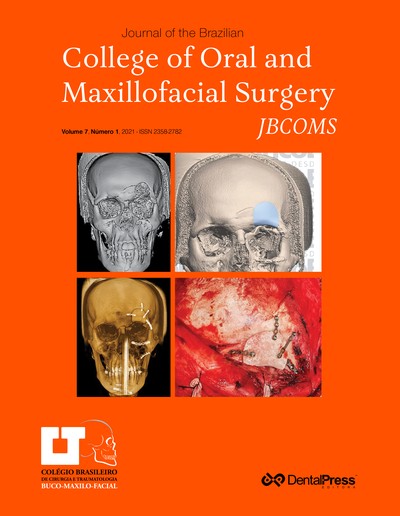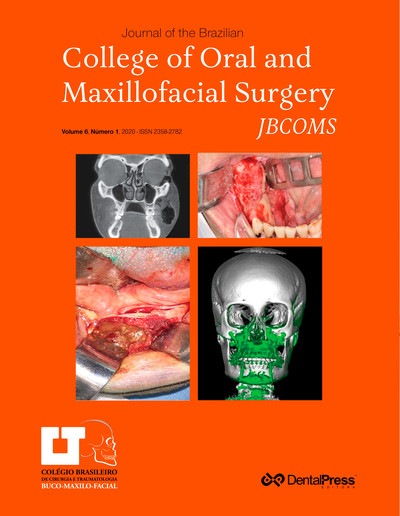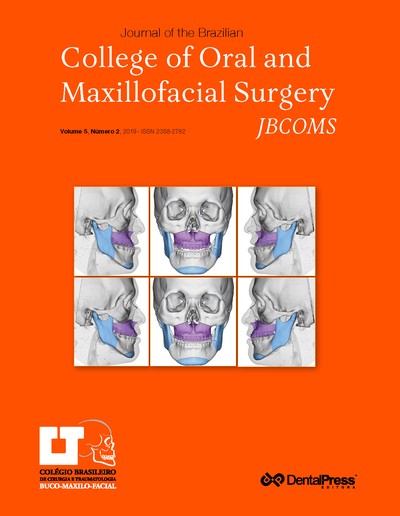
Epidemiological analysis of maxillofacial fractures in a referral hospital in Tocantins/Brazil
MARIANA ARAÚJO DOS SANTOS, PAULA VITÓRIA BIDO GELLEN, HYARA LUZ MOREIRA, MARCOS PHELIPE ARAÚJO ANDRADE ALVES, TÁSSIA SILVANA BORGES, JOSÉ AFONSO DE ALMEIDA
Introduction: Epidemiological studies on oral and maxillofacial trauma play an important role in public health, by directing actions for health promotion, prevention and diagnosis. Objective: The aim of this study was to identify the profile of traumatized patients, with an emphasis on oral and maxillofacial fractures treated in a referral hospital in the North region of Brazil. Methods: A retrospective analysis of the medical records of patients treated over a period of 7 years was performed, collecting the following variables: sex, age, diagnosis, etiology and anatomical site. A descriptive analysis of the data was performed, and some variables were assessed using the chi-square test. Results: 471 medical records were analyzed, most of them of male patients (73.5%; n=346), aged 20 to 35 years (48.6%; n=229). Regarding the etiological factors, 56.5% (n=266) of the patients were victims of traffic accidents, being the most prevalent etiology. Physical aggressions corresponded to 24.8% (n=117) of the treated cases. Based on this, the most affected oral and maxillofacial location was the mandibular bone (n=121; 25.7%), followed by the nasal bone and zygomatic complex. Conclusion: The epidemiological profile of trauma in the studied hospital consisted of men, aged 20 to 35 years, mainly involved in traffic accidents, in which they had face trauma, with fracture of the mandibular bone.
Keywords: Epidemiology. Maxillofacial injuries. Health promotion.
How to cite: Santos MA, Gellen PVB, Moreira HL, Alves MPAA, Borges TS, Almeida JA. Epidemiological analysis of maxillofacial fractures in a referral hospital in Tocantins/Brazil. J Braz Coll Oral Maxillofac Surg. 2021 Sept-Dec;7(3):16-21.
Friday, May 10, 2024 04:14










